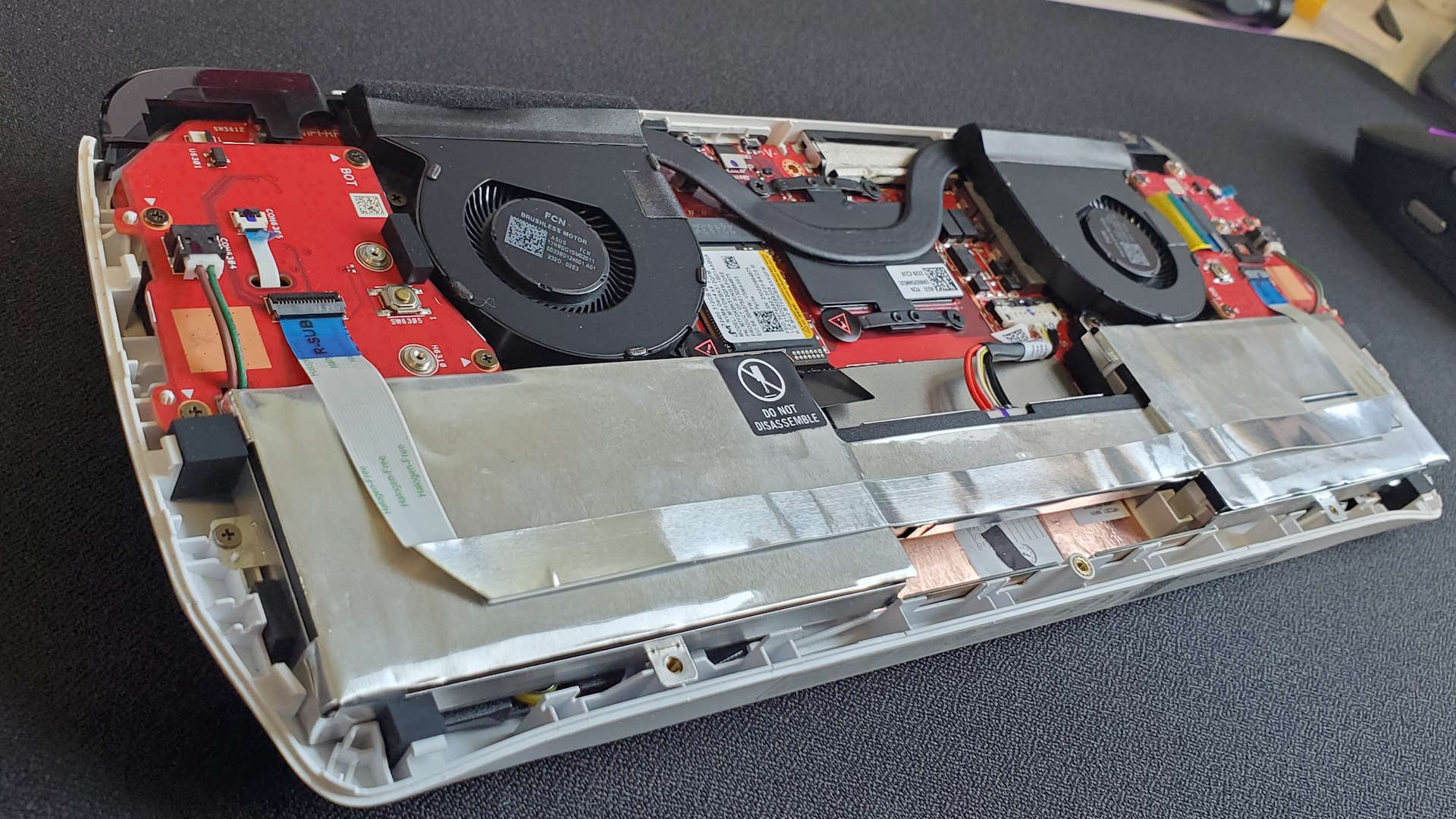Asus has announced it’s going to be shipping the ROG Ally Z1 edition handheld PC starting from October 3 for the painfully high price of $599 (£599). This new device will ship with essentially the same base hardware as the top-spec ROG Ally, which sports the full AMD Z1 Extreme APU, so in a way you can see why it’s only $100 cheaper.
After all, you’re still getting the same lovely 500cd/m2 120Hz 1080p display, the same 512GB SSD, 16GB LPDDR5-6400, and a UHS-II microSD slot that may or may not melt the contents of which into so much silicon slag.
The issue is that, while the AMD Z1 is a supremely interesting chip, it’s very underpowered in gaming terms compared with the Z1 Extreme because it’s using the 740M iGPU as opposed to the powerful 780M option. The top chip then has the full complement of 12 compute units (CUs)—the same as the Ryzen 7 7840U that’s powering all the best handheld gaming PCs right now—but the plain Z1 is rocking only a third of that.
With just four CUs you’re getting 256 shaders compared with the 768 of the full Z1 Extreme chip. And that effectively puts it at half the GPU silicon of the Aerith APU at the heart of the Steam Deck. Yeah, a theoretical halving of the gaming performance of the Deck, but with a $599 price tag. Ouch.
Considering Valve’s inaugural handheld gaming PC is still up for sale as part of Steam’s 20th Anniversary sale, I’m struggling to see why anyone would either not save themselves a ton of cash and go for the Steam Deck, or spend another $100 and buy the full spec ROG Ally.
I will admit, I have not tested the Z1 edition of the ROG Ally as yet, so I can’t say whether there might be some special sauce inside the silicon that can give it some edge, but looking at the raw specs it doesn’t seem likely. AMD has published some comparative graphs, which seem more promising, however.
But it is an interesting chip, however, given that it’s the first of AMD’s effective hybrid processors as it’s reportedly a Phoenix 2 APU, which means it sports both Zen 4 and Zen 4c cores at its heart, and isn’t just the rebadged Ryzen 5 7540U we thought it would be.
Nominally, the hybrid design brings to mind Intel’s Alder Lake and Raptor Lake chips, but rather than the same sort of Performance and Efficient cores, AMD’s Zen 4c cores are practically identical to the Zen 4 cores except are meant to have less cache and run at a lower clock speed. They’re just smaller so you can squeeze more of them into a package if you want.
(Image credit: Asus)
(Image credit: Future)
Steam Deck review: Our verdict on Valve’s handheld.
Best Steam Deck accessories: Get decked out.
Steam Deck battery life: What’s the real battery life?
That’s not what’s happened here specifically, the AMD Z1 is a six-core APU, with 12 threads of processing possible, but it’s only got two of the full Zen 4 cores with four slower Zen 4c cores. But the images in the leaked screenshots show an identical cache structure for both the different cores, and that runs counter to what we’d previously heard about AMD’s rearchitecting of the Zen 4c cores to house half the L3 cache in order to fit in a smaller space.
Still, they do reportedly run slower, so while it might advertise a boost clock of 4.9GHz (against the 5.1GHz of Z1 Extreme) that’s likely to only be for the big cores, with the Zen 4c cores probably running much slower at the 3.5GHz mark.
Honestly, none of that CPU side stuff would be an issue with the ROG Ally where it not backing up a correspondingly weak integrated GPU. The actual octa-core APU, with a full 16 threads, is overkill for a handheld gaming PC, and a more efficient APU but with compromised processor power, wouldn’t be a problem in gaming terms. But with a third of the GPU silicon it’s going to feel really underpowered.
Thankfully it’ll still be bundled with three months of Xbox Game Pass Ultimate, so you will at least be able to stream some games at a decent frame rate, but native performance could be a real concern. But we’ll have to wait to see how it really performs in the real world once we get final silicon in our labs.











